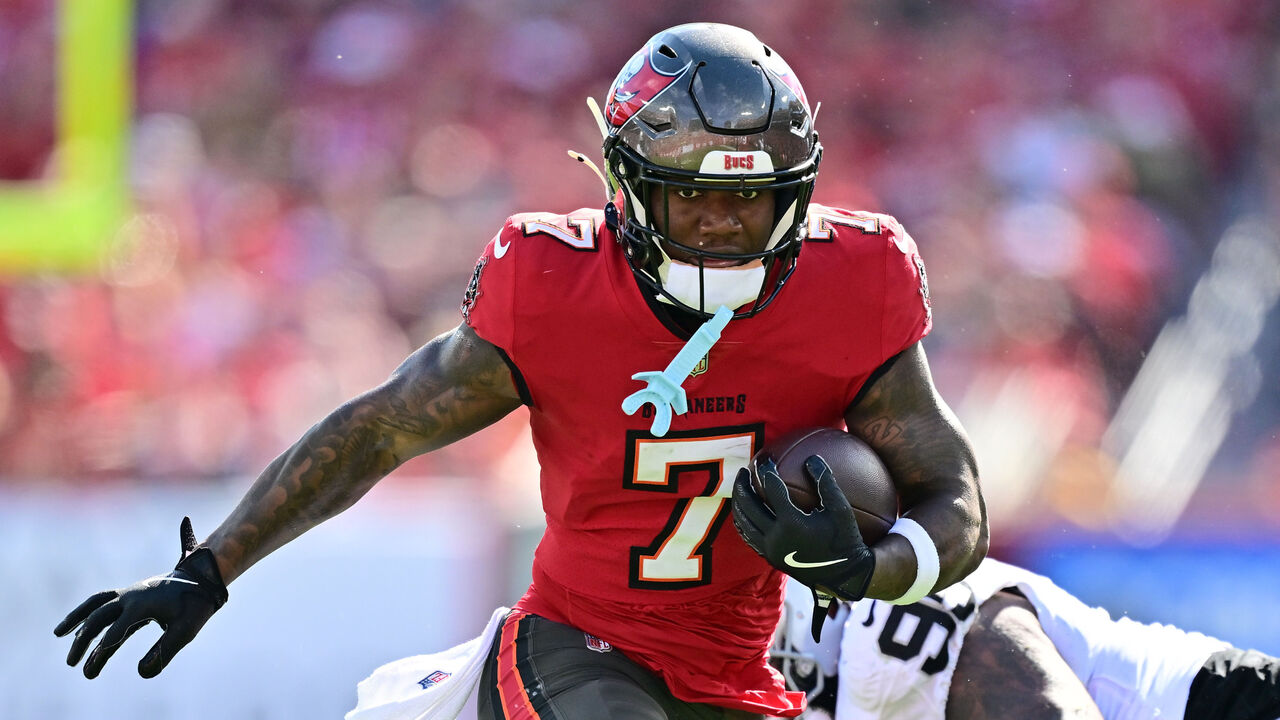This isn't your father's NFL draft
It wasn't that long ago that watching the NFL draft was an exercise in one simple question: Will my team pick someone I've heard of?
There were college stars who viewers were familiar with: quarterbacks, running backs, wideouts, the odd pass-rusher. For the typical fan, almost everyone else fell into the category that amounted to a lot of shrugs and guesses. An offensive lineman from Tennessee, you say? Sounds great!
But the big-data era in sports hasn't just changed the way we watch and understand the games themselves, with expected points, win probabilities, and other analytical tools; it's made the draft itself a different spectacle. Now it's a window into whether teams understand the modern game. And fans are almost as equipped to make those judgments as anyone.
Consider the top end of Thursday night's NFL draft first round. Ashton Jeanty is by all accounts a generational talent, a player who came within a few yards of breaking Barry Sanders' single-season rushing record. The Boise State back can also catch passes and block. There was draft-day talk of teams trying to trade up to get him, and a weird change in the betting markets when it was reported the Chicago Bears might do so. But in the end, he went to the Las Vegas Raiders with the sixth pick, right where he'd been in mock drafts for weeks.
Jeanty was selected following two linemen, an edge rusher, a quarterback, and a two-way unicorn, almost entirely because running backs simply don't go that high anymore. Positional value must be respected. Taking Jeanty at, say, No. 2, like Saquon Barkley was in 2018, would have seemed a little crazy. Even at No. 6, there are questions about whether the Raiders went for a running back too early. The performances of Barkley and Derrick Henry as free-agent signings last season may have rehabilitated the position somewhat, and indeed their names were mentioned on the broadcast when Jeanty was selected, but both those players made huge differences on teams built to take advantage of talented running backs.
Are the Raiders one of those teams? (Spoiler: no.) Maybe Jeanty will be so good that he'll make up for his new team's blocking deficiencies, but it's just as likely Omarion Hampton, taken 16 spots later out of North Carolina by the Los Angeles Chargers, will put up better numbers on a team already effective at running the ball.
(It's also just as likely someone else entirely leads rookie rushers. The leader in that category in 2024 was Bucky Irving, the sixth back taken last April, in the fourth round by Tampa Bay.)

If there was an overall theme to Thursday's first round, it was that most teams were happy to stay safe and select players in premium positions, the kind of player who'll cost a lot if acquired in free agency. There were eight offensive linemen drafted and 10 along the defensive line (including edge rushers). Positional value for the win, especially in a league in which the salary cap means all dollars must be allotted carefully.
Perhaps not surprisingly, the only real curveballs came from two teams with a recent history of draft-night puzzlers.
The Atlanta Falcons took edge rusher Jalon Walker out of Georgia with the 15th pick, a possible steal, but then traded back into the first round to take another edge rusher, Tennessee's James Pearce Jr., with the 26th pick. They gave next year's first-round pick to the Los Angeles Rams - a steep price - to make that deal. Taking two players at the same position 11 picks apart is, to be polite, unconventional. Is it less weird than taking quarterback Michael Penix Jr., with the eighth pick last year after giving Kirk Cousins $100 million guaranteed in free agency? Probably not. Hooray for progress, I guess.
The New York Giants, meanwhile, resisted doing anything crazy with the No. 3 pick, selecting edge rusher Abdul Carter, before trading back into the first round to take Ole Miss quarterback Jaxson Dart with pick 25. It's a move that might have seemed bonkers a month ago, but the Giants let it be known for a while they were interested in Dart, so this ends up looking like a shrewd bit of business, even if it did cost them second- and fourth-round picks to get their guy.
Will it prove to be actually shrewd? That part's less clear. Dart may not even play in 2025, with veterans Russell Wilson and Jameis Winston signed in free agency. A situation where Dart does play may be more concerning: the Giants struggle early and turn to the rookie before he's ready to read NFL defenses.
But whatever happens with their new young QB, at least New York didn't reach wildly to grab him, as a former Giants front office did in selecting Daniel Jones sixth overall in 2019.
Even the surprising draft moves now carry much less risk. Everyone's learning, it seems.
Scott Stinson is a contributing writer for theScore.